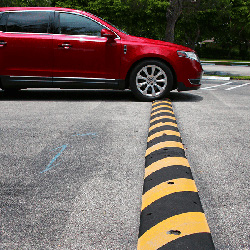Speed bumps are a familiar sight on many roads and parking lots, serving as a common traffic calming measure. These physical obstacles are strategically placed to slow down vehicles and enhance safety for pedestrians and drivers alike. However, the question remains – are speed bumps truly effective in achieving their intended goals?
To Slow Down Vehicles and Improve Safety
Speed bumps are physical traffic calming devices designed to slow down vehicles and enhance safety on roads and in parking lots. Their primary purpose is to reduce vehicle speeds, especially in areas where pedestrian traffic is high or where speed limits need to be enforced. There are various types of speed bumps, each serving a specific function:- Traditional Speed Bumps: These are the most common type of speed bumps, characterized by their raised, rounded profile that forces vehicles to slow down when passing over them.
- Speed Humps: Similar to traditional speed bumps but longer in length, speed humps are used to control speeds over a more extended area.
- Speed Tables: These are wider and flatter than traditional speed bumps, providing a gentler transition for vehicles while still achieving the desired speed reduction.
Pros of Speed Bumps
Speed bumps offer several advantages in promoting road safety and reducing vehicle speeds:- Effective Speed Reduction: Speed bumps are highly effective in slowing down vehicles, forcing drivers to decrease their speed when approaching these traffic calming devices.
- Studies and Statistics: Research studies have shown that the presence of speed bumps leads to a significant decrease in vehicle speeds and a reduction in accidents in areas where they are installed.
- Improved Pedestrian Safety: By reducing vehicle speeds, speed bumps contribute to enhancing pedestrian safety, especially in areas with high foot traffic such as school zones, residential neighborhoods, and shopping areas.
Cons of Speed Bumps
While speed bumps offer benefits in promoting road safety, they also come with certain drawbacks:- Increased Noise and Emissions: Speed bumps can lead to increased noise pollution and emissions as vehicles decelerate and accelerate frequently over these obstacles.
- Inconvenience for Emergency Vehicles and Public Transportation: Speed bumps may impede the progress of emergency vehicles such as ambulances and fire trucks, causing delays in response times. Additionally, they can disrupt the schedules of public transportation, affecting bus routes and passenger comfort.
- Erratic Driving Behavior: Some drivers may attempt to avoid speed bumps by swerving or braking abruptly, leading to erratic driving patterns that can pose risks to other road users and pedestrians.
Alternatives to Speed Bumps
When considering traffic calming measures beyond speed bumps, alternative solutions like roundabouts and speed cameras come into play. Let’s explore these options:- Roundabouts: Roundabouts are circular intersections designed to slow down traffic flow and improve safety. They have the advantage of promoting continuous traffic movement, reducing the need for abrupt stops like with speed bumps. However, roundabouts require significant space and may not be feasible in all urban settings.
- Speed Cameras: Speed cameras are automated devices that capture images of vehicles exceeding the speed limit. While they can effectively deter speeding and improve compliance, they may face challenges regarding public acceptance and privacy concerns.
Effectiveness of Speed Bumps
When evaluating the effectiveness of speed bumps, it is essential to consider various perspectives:- Arguments for Speed Bumps: Proponents of speed bumps argue that they are effective in reducing vehicle speeds and enhancing road safety. Studies have shown a decrease in speed-related accidents in areas where speed bumps are implemented.
- Arguments against Speed Bumps: Critics highlight potential drawbacks of speed bumps, such as increased noise and emissions, inconvenience for emergency vehicles, and the possibility of drivers swerving to avoid them.

